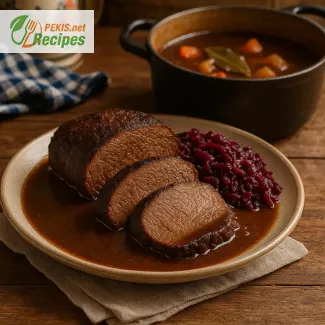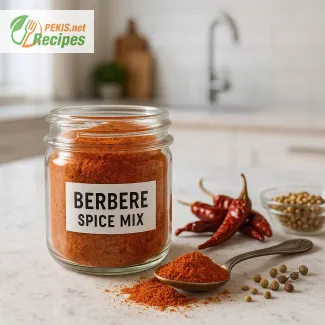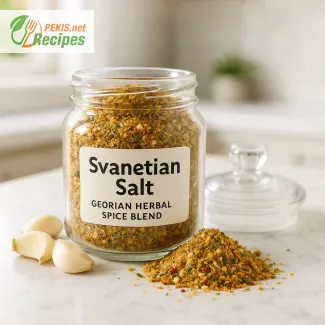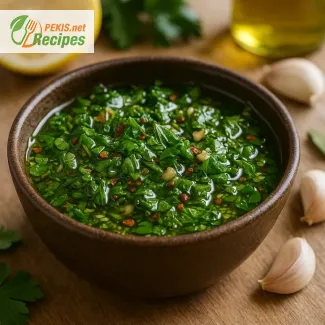
Mastering German Comfort Food: Sauerbraten Like Never Before
A slow-cooked beef roast rich with heritage and bold flavors
When it comes to classic German recipes, few dishes carry the cultural weight and culinary prestige of Sauerbraten. This marinated pot roast is more than just a hearty meal—it’s a window into centuries of German cooking tradition, celebrated for its deep, complex flavors and its transformative use of acidic marinades to tenderize even the toughest cuts of beef. Whether served at festive gatherings or as the star of a quiet family dinner, Sauerbraten is a beloved staple across generations and regions of Germany, from Bavaria to the Rhineland.
What makes Sauerbraten a traditional German masterpiece?
Sauerbraten, which literally translates to “sour roast,” gets its name from the long marination process in a vinegar-based brine infused with aromatic spices, vegetables, and red wine. The marinade is not only essential for the dish’s unmistakable tang but also for turning a humble cut of beef into an incredibly tender, flavorful roast. The resulting meat is slow-braised until meltingly soft, then paired with a rich gravy made from the reduced marinade—often thickened with gingersnap cookies for a subtle sweetness and depth.
The authentic Sauerbraten experience lies in its balance of sweet, sour, and savory notes. It's a dish that respects patience, rewarding slow cooking with unmatched texture and flavor. While regional variations exist—some recipes incorporate raisins or a different selection of spices—the core of the recipe remains faithful to its roots: a celebration of time-honored techniques and full-bodied taste.
Choosing the right cut of beef for perfect results
Traditional Sauerbraten is often made using beef chuck, rump roast, or bottom round, all of which benefit from the extended marinating and slow cooking. These tougher cuts, which would normally require aggressive cooking methods, are gently coaxed into fork-tender perfection through the acidic marinade and low-temperature braise. While some modern adaptations use pork or even venison, beef remains the most iconic and authentic choice.
To ensure success, it's crucial to allow the beef to marinate for at least three days—a step that cannot be rushed. This slow infusion of flavor not only breaks down the meat’s connective tissues but also imparts the signature tang that defines Sauerbraten.
The essential marinade: crafting the heart of the dish
A hallmark of Sauerbraten is its aromatic, wine-and-vinegar marinade, which infuses the beef with character and complexity. The base typically includes red wine vinegar, dry red wine, bay leaves, peppercorns, cloves, juniper berries, onions, and carrots. This combination of ingredients creates a deeply flavorful liquid that sets the foundation for the entire dish.
Once the meat is removed from the marinade and browned, the reserved liquid is used as the braising base. After several hours of cooking, the liquid is strained and reduced into a luscious sauce, often enriched with crushed gingersnaps or brown sugar for a velvety finish. The result is a sauce that’s both robust and smooth, bringing balance to the tangy notes of the marinade.
Traditional German accompaniments for a full meal
An authentic Sauerbraten isn’t complete without its classic sides. In many German households, it’s traditionally served with buttery potato dumplings (Kartoffelklöße), braised red cabbage (Rotkohl), or boiled potatoes, each acting as the perfect sponge for the rich gravy. These sides are not only comforting but also culturally embedded in the Sauerbraten dining ritual, bringing harmony and warmth to the table.
In regions like the Rhineland, you might also find apple compote or even spätzle served alongside, adding a slight sweetness or a chewy texture that complements the tender meat. Regardless of the side, the emphasis is always on letting the beef and its sauce shine.
Historical roots and regional identity
The origins of Sauerbraten are deeply tied to German culinary history, with some legends crediting Charlemagne or Julius Caesar for inspiring the method of pickling meat before cooking. Regardless of its precise origin, Sauerbraten gained popularity across different German states, each adding its own regional flair. For example, Rhineland Sauerbraten is often sweeter due to the addition of raisins and sugar, whereas Franconian versions lean more acidic and robust.
What unites all versions is their devotion to traditional preparation methods and the elevation of simple ingredients through time and care. For many, preparing Sauerbraten is a culinary ritual passed down through generations—often tied to holidays, family reunions, or Sunday feasts.
Why Sauerbraten remains a timeless favorite
Sauerbraten continues to be celebrated not just in Germany, but around the world, thanks to its deep umami richness, comforting warmth, and distinctive taste. Its long marination and slow cooking speak to a different pace of life—one where meals are savored, stories are shared, and every bite holds meaning.
In an age where fast food and convenience often reign, Sauerbraten offers a reminder of the value of slow, intentional cooking. It's a dish that requires planning and patience, yet rewards with unparalleled satisfaction. Whether you’re introducing it to your family for the first time or reviving a cherished memory, Sauerbraten is more than a meal—it’s culinary storytelling at its finest.
Step 1: Prepare the marinade
In a large saucepan, combine red wine, vinegar, and water. Add the sliced onion, carrot, and celery. Stir in bay leaves, peppercorns, cloves, juniper berries, and mustard seeds. Bring to a gentle boil, then let it cool completely.
Step 2: Marinate the beef
Place the beef roast in a glass or ceramic bowl. Pour the cooled marinade over the meat, ensuring it’s completely submerged. Cover and refrigerate for at least 3 days (up to 5), turning the meat once daily to ensure even marination.
Step 3: Sear the beef
Remove the meat from the marinade and pat dry with paper towels. Reserve the marinade. In a large Dutch oven or heavy pot, heat vegetable oil over medium-high heat. Sear the beef on all sides until well browned. Remove and set aside.
Step 4: Cook the roast
Strain the marinade to remove the solids. Return the beef to the pot and pour the strained marinade over it. Add brown sugar and bring to a simmer. Cover and cook over low heat (or in a preheated oven at 160°C / 320°F) for about 3 hours, or until the meat is fork-tender.
Step 5: Make the sauce
Once cooked, remove the beef and keep warm. Strain the cooking liquid and return it to the pot. Add crushed gingersnap cookies and stir until the sauce thickens. Season with salt and pepper to taste. Simmer for 10–15 minutes to blend the flavors.
Step 6: Serve
Slice the Sauerbraten into 1.5 cm (½ inch) thick slices. Serve with the rich sauce, traditionally accompanied by potato dumplings, boiled potatoes, or braised red cabbage.
Elevating Sauerbraten: Modern Twists on a German Classic
Tips, ingredient upgrades, and techniques for deeper flavor and better results
Traditional Sauerbraten holds a special place in German cuisine as a slow-cooked pot roast infused with bold flavors from a vinegar-based marinade. While the original version is deeply satisfying, there are countless ways to refine, personalize, and even enhance the taste and texture of this classic dish. From upgrading ingredients to adopting new cooking methods, modernizing Sauerbraten can lead to even more remarkable results without compromising its authentic essence.
Enhancing the marinade for deeper complexity
The marinade is the foundation of Sauerbraten. Traditionally made with red wine, red wine vinegar, onions, and spices, its purpose is both to tenderize the meat and infuse it with flavor. For a richer, more aromatic result, consider adding:
- A splash of balsamic vinegar: Adds depth and natural sweetness that balances acidity.
- Fresh thyme or rosemary: Brings a herbal note that complements the meat.
- Garlic cloves: Adds umami and enhances savoriness.
- Orange or lemon peel: Introduces subtle citrus brightness, especially in winter months.
These additions create layers of flavor and elevate the dish without straying too far from tradition.
Using better cuts and aging the beef
Though beef rump or bottom round is traditionally used, using dry-aged beef or switching to beef brisket can significantly improve tenderness and mouthfeel. Dry-aged beef develops more umami through controlled enzymatic breakdown, resulting in a more intensely flavored roast. If budget allows, this is one of the most luxurious ways to upgrade the dish.
Marinating for four to five days instead of three further enhances tenderness and depth of flavor, as long as the meat stays properly refrigerated and covered.
Gingersnap cookies: use sparingly or switch for balance
Gingersnap cookies are a defining part of Sauerbraten’s sauce, but their intensity can overwhelm the dish if overused. To refine this element:
- Use half the amount of cookies and balance with crushed rye bread or a small spoon of apple butter.
- Substitute gingersnaps with pumpernickel bread or honey-sweetened crackers for a deeper and earthier finish.
- Add a touch of cocoa powder or coffee to the sauce to deepen the roasted flavor profile.
These changes retain the sauce’s signature richness but offer a smoother, less sugary experience.
Homemade over prepackaged: why every step counts
Many shortcuts exist for Sauerbraten, such as bottled marinades or pre-seasoned meats. However, making everything from scratch delivers unmatched control over taste and dietary needs. Freshly ground spices, high-quality red wine, and hand-selected vegetables translate directly into a sauce with real character.
Cooking it at home also allows adjustment of sodium levels, use of organic ingredients, and avoidance of preservatives or artificial thickeners often found in commercial versions.
Common mistakes and how to avoid them
Even seasoned cooks make errors when preparing Sauerbraten. Here are the most frequent pitfalls:
- Under-marinating: Less than three days won’t tenderize the meat adequately or develop the desired tang.
- Overcooking the sauce: Reducing the sauce too aggressively can make it bitter. Keep it at a gentle simmer.
- Skipping the sear: Searing the beef adds essential umami and texture that’s impossible to replicate later.
- Using cheap wine: Poor-quality wine makes for a sour and unbalanced marinade. Choose a dry red wine that’s good enough to drink.
- Not straining the sauce properly: Straining ensures a smooth, velvety gravy without vegetable bits or spice debris.
Avoiding these missteps guarantees a more refined, consistent outcome.
Healthier adaptations for a lighter version
While traditional Sauerbraten is rich and hearty, it’s possible to make a lighter and healthier version:
- Replace brown sugar with maple syrup or date syrup for a more natural sweetener.
- Use low-sodium broth and reduce salt in the marinade.
- Swap out some of the gingersnap cookies with ground oats or chia seeds as thickeners.
- Serve with roasted root vegetables instead of dumplings to lower carbohydrate content.
These adjustments make Sauerbraten more approachable for modern diets, including low-sugar, gluten-free, or reduced-fat lifestyles.
Vegetarian alternatives inspired by Sauerbraten
For those seeking a plant-based option, Sauerbraten can be reimagined using hearty vegetables or plant-based proteins:
- Portobello mushrooms or jackfruit can soak up marinade beautifully.
- Use tempeh or seitan in place of meat for protein-rich versions.
- Retain the same marinade and sauce technique to preserve the characteristic flavor.
- Consider adding smoked paprika or liquid smoke to simulate meaty depth.
These versions don’t replicate meat perfectly but offer a new culinary experience while staying true to the essence of Sauerbraten.
Improving a time-tested dish like Sauerbraten doesn’t mean changing its soul—it means understanding its building blocks and tuning them to match your preferences or dietary needs. Whether you enhance the marinade with deeper aromatics, opt for better-quality meat, or introduce thoughtful substitutions, the result can be a dish that honors tradition while embracing modern creativity.
By staying mindful of technique, ingredients, and small enhancements, Sauerbraten becomes more than a meal—it becomes a personal expression of culinary care.
Allergens present in the recipe:
- Gluten (gingersnap cookies)
- Mustard seeds
- Possible traces of celery in marinade
Suggestions for allergen-free and gluten-free alternatives:
- Replace gingersnap cookies with gluten-free gingersnaps or crushed gluten-free crackers + cinnamon and nutmeg.
- Omit mustard seeds if allergic and substitute with a pinch of turmeric or caraway for depth.
- Ensure the vegetable stock or wine used does not contain hidden allergens or gluten.
Vitamins and minerals per serving (approximate):
- Vitamin B12: 2.6 µg – supports red blood cell formation and brain function
- Iron: 3.8 mg – essential for oxygen transport and energy metabolism
- Zinc: 6.1 mg – promotes immune function and skin health
- Vitamin A: 250 µg – supports vision and cell growth (from vegetables)
- Potassium: 580 mg – helps regulate blood pressure and fluid balance
- Magnesium: 35 mg – contributes to muscle and nerve function
Antioxidants per serving (approximate):
- Quercetin (from onions): 8 mg – anti-inflammatory and immune-supportive
- Anthocyanins (from red wine): 20 mg – supports heart health and cellular protection
- Beta-carotene (from carrots): 3 mg – converted to vitamin A, supports vision and immunity
- Eugenol (from cloves): trace – antimicrobial and anti-inflammatory effects
- Flavonoids (from juniper berries): 10 mg – oxidative stress protection and metabolic support





